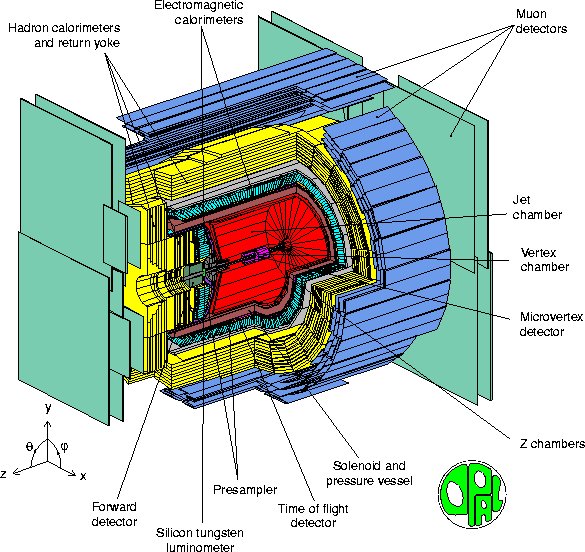
The OPAL experiment and the LEP collider started operation in 1989. Data taking finally ended on November 2, 2000. The OPAL detector was a large, multi-purpose, particle detector. The detector was sited on the LEP accelerator at CERN, and measured the results of interactions between electrons and positrons, which collided at the centre of the detector. The incoming electrons and positrons approached the centre of the detector from opposite directions, along the beam pipe. The beam pipe was an evacuated straight metal cylinder of a few cm radius passing right through the middle of OPAL: it provides a natural axis of symmetry to the detector. The components of the detector were arranged outside the beam pipe, in a layered structure, rather like the layers of an onion. Overall, the detector was about 12m long, 12m high and 12m wide. It was finally dismantled in 2001 but the analysis of the data will continue for many more years.

The image shows a cut-away view of the OPAL detector. You can see the layered structure, around the central beam pipe. Click on any of the labels to see more details about that part of the OPAL detector. Alternatively, you can choose from the list below.
Common questions about the OPAL detector: